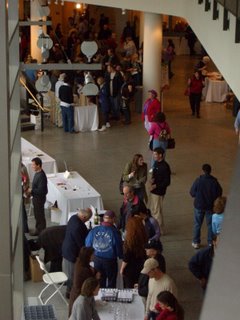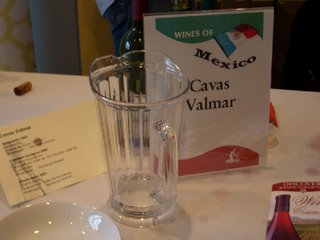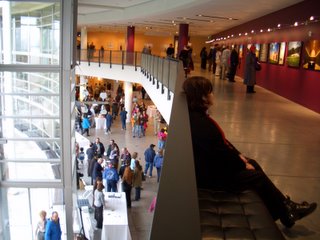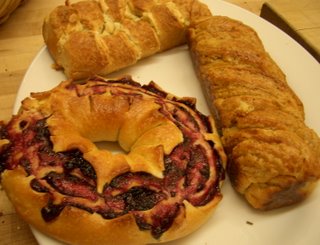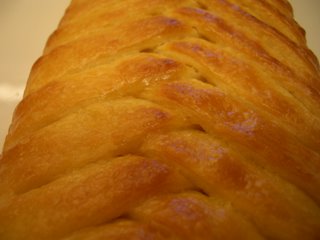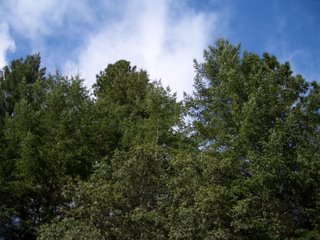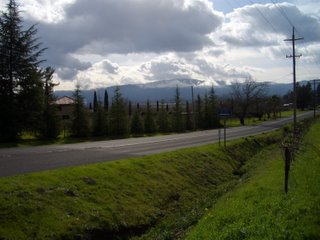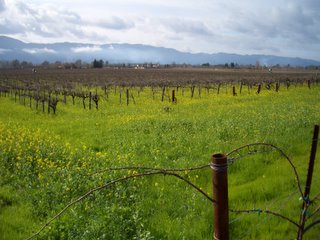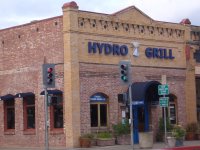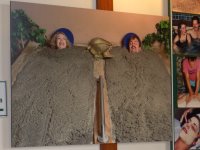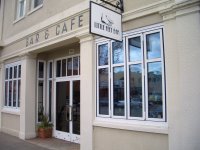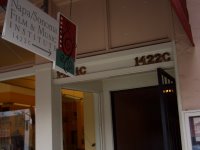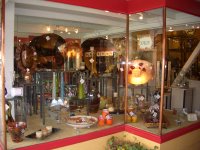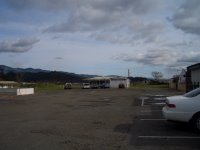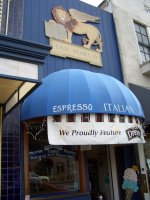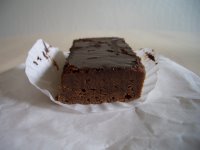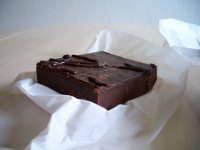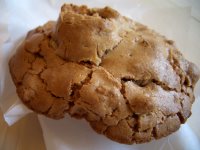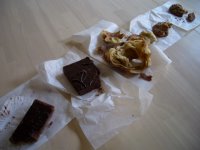
Having all the ingredients for a recipe if half the challenge of baking. Almost having all the ingredients is frustrating, but at least lends itself to some innovation.
I've been wanting to make this Prune Gateau Basque for quite a while. Prunes have become a pariah in the world of dried fruits, unless they are specifically bought for their digestive properties. But sometimes I get bored of all the common flavors, and the prune seems like a candidate for some innovative uses. It is, after all, a dried plum, and I like plums.
There is a movement now to market them as dried plums, but I think this new move is confusing an issue. Prunes are always whole dried plums, but what's marketed as dried plums can either be whole dried plums or plums that have been cut in half and dried; and in some case, completely different varieties of plums are used depending on the wholeness or the halfness. In the world of apricots, Turkish apricots are whole dried apricots while California apricots are apricots that have been cut in half and dried. So, I am going to put my foot down and think that prunes are to turkish apricots as dried plums are to California apricots.
Anyway, in this case, prunes were in order, and since I'd bought a bag of prunes a while ago, I thought I'd use that. And this is where my journey into conversion-land began. The recipe calls for 8 oz, and I had 6 ounces of rather dry organic prunes. That's 75% what I need. When you put the filling in, you're supposed to leave a 1/2 inch border, so I figured I would just have a wider border and thinner fruit layer.
Then it calls for armagnac, rum, and anise liquor. I didn't have any anise liquor. Ok. Cointreau seemed like a very assertive substitution, so I settled on
maraschino liqueur. It has a floral, almost pistachio-like flavor, even though it's made of cherries, and is great in a cocktail called an
Aviation. And since I used 75% of the prunes, I cut the alcohol by 75% each. There are 3 tsp in every tbs, so I used 2 tsp instead. I don't like alcohol to overpower desserts, so I was ok with the slight decrease. I did increase the water, though. I boiled the mixture and let it cool, but the prunes still seemed very tough, so I set it back to boil and added yet more water to compensate for the water that had steamed off. Eventually, they were soft, and I was happy.
Until I looked at the almonds. 1/2 cup sliced blanched almonds. I had whole almonds and almond meal. This is why measurement by weight rocks while measurement by is shaky ground. I googled the weight of the almonds called for, and found 40 grams. So I substituted 40g of almond meal since the almonds were to be pulverized in the food processor anyway.
I also used the Plugra butter instead of regular butter, but I decreased the amount just a touch, because it does have higher fat content, and I didn't want it too saturated with butter.
I also used less almond extract and more vanilla extract, which in total equaled 2 tsp, because I like vanilla better than almond and knew that the almond flavor would be plenty prominent anyway.
I was able to follow the rest of the recipe without a hitch.
And Gateau Basque is a cake traditional to the Basque region of France, which is by the northern part of the Spanish border. The first time I bought one in Biarritz, I didn't know what it was. It just looked like a flat yellow cake. It turned out to be a senstation of ground almonds and cherry preserves. They seemed to be made differently at every bakery; sometimes filled with pastry cream, sometime dense, sometimes light. So, filling it with prune fits in with its adaptable nature.
This one turned out very well. A moist, flavorful almond cake and deeply flavored, almost gooey prune center with delicate floral notes. I also had plenty of filling, despite the 75% quantity made.

Prune Gateau Basque
one 9-inch cake
from Ripe for Dessert by
David Lebovitz
Prune Filling:
8 oz pitted prunes, quartered (about 1 cup)
3 tbs Armagnac or brandy
1 tbs rum
1 tbs anise-flavored liquor, such as ouzo, pastis, or anisette
Grated zest of 1/2 orange
1/4 cup sugar
1/4 cup water
Dough:
1 1/2 cups flour
1/2 cup sliced blanched almonds
1 tsp baking powder
1/4 tsp salt
3/4 cup sugar
8 tbs butter (1 stick), unsalted, at room temp
1 large egg
1 large egg yolk
1 tsp vanilla extract
1 tsp almond extract
Glaze:
1 large egg yolk
1 tsp milk or cream
To make prune filling: Heat the prunes in a saucepan with the armagnac, rum, anise liquor, orange zest, sugar, and water. When the liquid comes to a boil, remove them from the heat and let stand until the prunes are tender.
To make the dough: In the bowl of a food processor, process the flour, almonds, baking powder, and salt until the almonds are finely ground. Add the sugar and the butter and process until the butter is in tiny pieces. Add the egg, the egg yolk, and the almond and vanilla extracts and process until the dough is smooth.
Divide the dough into two pieces, one slightly larger than the other. Wrap each piece in plastic, shape into a disk, and refrigerate for at least 1 hour, until firm.
In the bowl of the food processor, pulse the prunes and their cooking liquid together until the mixture forms a slightly chunky puree.
Position the oven rack in the lower third of the oven and preheat to 350 degrees. Butter and flour a 9-inch springform pan, and tap out any excess.
To assemble the tart, remove the larger disk of dough from the refrigerator. Heavily dust both sides with flour, and roll out between 2 sheets of plastic wrap into a 10-inch circle. Remove the top sheet of plastic wrap and drape the dough, unwrapped side down, over the springform pan. Gently press the dough to fit into the bottom and partway up the sides of the pan. Peel the other piece of plastic away from the dough carefully to avoid tearing the dough (if you do, dip your hand in flour and pinch any tears together).
Spread the prune filling over the dough in the springform pan, leaving a 1/2 inch border uncovered.
Dust the remaining disk of dough with flour and roll it out into a 9-inch circle between sheets of plastic wrap. Remove the top sheet, invert the circle of dough, and center it on top of the prune filling. Peel away the plastic wrap. Trim any excess dough from the bottom circle where it goes up the sides of the pan and fold the edge of that circle back over the upper piece of dough, pressing down gently to seal in the filling.
To make the glaze: Beat the egg yolk with the milk or cream and brush the top of the gateau. Make a crosshatch pattern in the top by raking the dough with the tines of a fork.
Bake the tart for 40 minutes, until golden brown. Remove from oven and cool completely before removing the sides of the springform pan and serving.

























